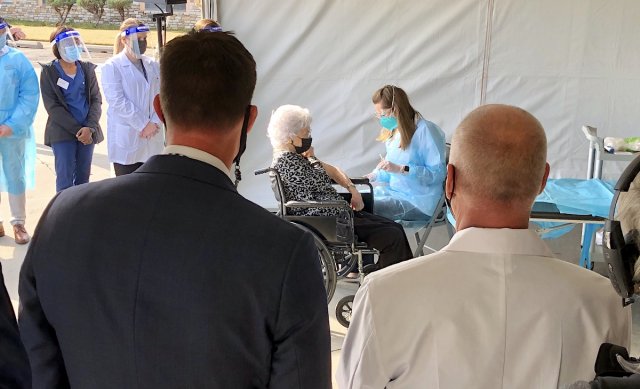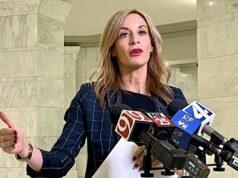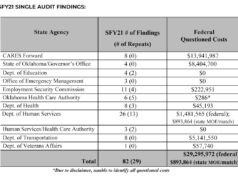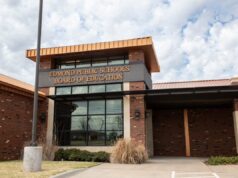

(Update: On Wednesday, Jan. 6, the Oklahoma State Department of Health launched the vaccination appointment portal described below. While pre-registration is possible Jan. 6, appointments will open for scheduling Thursday, Jan. 7.)
Oklahoma is moving into the second phase of its four-step COVID-19 vaccination plan, but uncertain supplies and technological obstacles make it hard to predict how quickly or smoothly Phase 2 will unfold.
In a Zoom press conference this afternoon, Oklahoma State Commissioner of Health Dr. Lance Frye and Deputy Commissioner of Health Keith Reed spoke about plans to move into Phase 2 of the state’s plan and announced a vaccine appointment app that is scheduled to launch this week.
Vaccine access options
State pre-registration / appointment portal
Check your county health department’s website
Review this list of vaccine clinics via KFOR
Ask your medical provider to enroll as a vaccine distributor
The COVID-19 vaccine Phase 2 plan includes first responders, people over the age of 65, those with comorbidities and K-12 teachers, but the health officials emphasized that the state is dependent on unpredictable weekly federal distributions of the vaccine. As a result, the COVID-19 vaccine Phase 2 roll out will not occur all at once and will be restricted to Phase 2 first responders, health workers and, in some areas, those over 65 until supplies increase
“I want to assure you that we have a statewide plan that’s being implemented right now, but parts of that plan are being driven by local needs within our county health departments,” Frye said. “This is how we can ensure that the vaccine is getting to Oklahomans as quickly and efficiently as possible.”
In order to increase access, the Oklahoma State Department of Health also announced that it would be rolling out a vaccine appointment scheduling app and increasing the number of points of distribution, with 90 access sites expected around the state in the coming week.
The next steps
Oklahoman began Phase 1 of its four-step COVID-19 vaccination plan in mid-December, administering the first doses to front-line health care workers and residents of long-term care centers.
According to the latest numbers from the Oklahoma State Department of Health, 50,330 vaccine doses have been administered out of the 174,900 the state has received. All the remaining doses have been spoken for as long-term care residents continue to be vaccinated through a federal partnership with CVS and Walgreens.
“Any concern that people aren’t interested in getting a vaccine is pretty much out the window, as far as I can tell,” Reed said. “Because we are getting a lot of calls and a lot of interest out there on getting vaccinations and getting appointments.”
Communities have been able to move through Phase 1 at different paces, Reed said, and the move to vaccinate those 65 and over will happen first in places that are no longer able to fill all their appointments with with higher-priority groups.
“Vaccine in a freezer doesn’t do any good,” Reed said. “It doesn’t do any good whatsoever at stopping the pandemic or stopping the spread of COVID. It just doesn’t help us any, so we’ve got to get vaccine moving into people. And for us to have a system that would require everyone to move to that next step in lockstep with each other, that would create an inefficiency and leave vaccine in the freezer when it could be protecting people.”
Vaccine appointment app coming soon
OSDH plans to launch a statewide vaccine phone app Thursday, Frye said. The app will allow those eligible to book a time to receive the vaccine locally.
All vaccines distributed by the state will be administered by appointment only.
“There’s a reason we’re not just doing walk-in clinics,” Reed said. “We don’t want a free-for-all type of environment.”
The state had originally planned to use an app provided by the federal Centers for Disease Control but ultimately decided it “did not quite meet all our needs,” Reed said. The app being launched this week was created for the state by Microsoft, and the release was delayed by this last-minute change.
But while an app increases accessibility and convenience for many, Reed said it is “a legitimate concern” that the program will make it harder to book an appointment for people without smartphones or internet access, or for those who don’t feel comfortable using the technology — a particular concern for the over-65 population.
One approach, Reed said, is to reserve a certain number of appointments for those not booking through the app. He encouraged people to help their family members with app access if possible and said appointments would remain available by calling county health departments or 2-1-1.
“We need to be clear moving forward,” he added, “that this is going to be a very difficult process, and it’s going to be a long process, and there’s going to be a lot of challenges. In order to keep everything completely fair and on the same level, that’s going to be a difficult thing.”
Supply challenges
The challenge of fair distribution is linked to the larger obstacle of limited access to the vaccine.
The doses distributed by the Oklahoma State Department of Health come from the federal vaccine program Operation Warp Speed, which is distributing vaccines nationally and informs the state weekly, on Tuesdays, of how many doses to expect the following week.
This week, Oklahoma has been allocated 32,550 doses. Frye said they expect to receive between 30 and 40 thousand doses per week, but there is no guaranteed number, and Reed said it is too early to identify any upward trend in supply.
As a result, the new app will only make appointments available on a week-to-week basis when it launches.
Asked how long it might take to move to other groups within Phase 2 — such as teachers — Reed said the supply limitations made it hard to predict.
“My crystal ball is broken on that one,” he said. “That very much depends on the vaccine inventory coming in. Our hope was that we were going to get enough vaccine inventory that we were just really inundated as a state. And that was going to allow us to (…) create lots and lots of access points. That hasn’t happened yet.
“It’s very possible that we’re all just impatient for that because we all just want to get this behind us.”




















